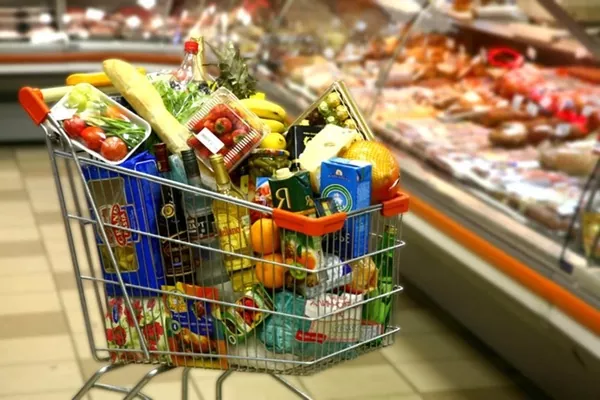The cost of groceries in America rockets

On May 11th the US Bureau of Labour Statistics (BLS) released its latest estimate of American retail prices. The Consumer Price Index, which tracks the cost of all goods and services weighted by their share of households’ expenditure, increased by 0.3% in April after rising by 1.2% in March. That was a welcome slowdown, but still means prices were 8.3% higher than a year ago. Petrol prices are up by 43.6% year-on-year and energy by 13.7%. Food, including restaurant meals, is 9.4% more expensive and groceries are 10.8% dearer.
The Department of Agriculture’s Economic Research Service breaks down increases in food prices by product, such as vegetables or beef. It collates figures from farmers, wholesalers and retailers, as well as factoring in the cost of fuel for transporting goods. Its latest modelling, for March, indicates that the price of meat has risen more quickly than that of any other food. Beef and veal prices, for example, have increased by 16% year-on-year. Americans hoping to cut their personal spending might consider eating more of their five-a-day. The price of fresh vegetables grew by a less painful 5.9%.
Why is food getting so much dearer? Transport is a big factor. The price of a gallon of fuel reached a 30-year high on March 16th, according to data tracked by the US Energy Information Administration. A tight labour market is also to blame. Workers at every stage of food production, including harvesting, transport and sale, are in short supply. BLS data show there were just over 2m job openings in trade, transportation and utilities in March. This means existing workers can negotiate higher pay, the cost of which is passed on to consumers. Wages are up 8% year-on-year for transportation and warehousing staff.
The Department of Agriculture will update its numbers again, accounting for price changes in April, on May 25th. Given the overall rise in prices reported in the April BLS report, the trend is not likely to improve. Americans might be able to avoid some goods that government statisticians say have grown more costly most quickly, such as used cars and petrol—but everyone has to eat.
Read also
Wheat in Southern Brazil Impacted by Dry Weather and Frosts
Oilseed Industry. Leaders and Strategies in the Times of a Great Change
Black Sea & Danube Region: Oilseed and Vegoil Markets Within Ongoing Transfor...
Serbia. The drought will cause extremely high losses for farmers this year
2023/24 Safrinha Corn in Brazil 91% Harvested
Write to us
Our manager will contact you soon



